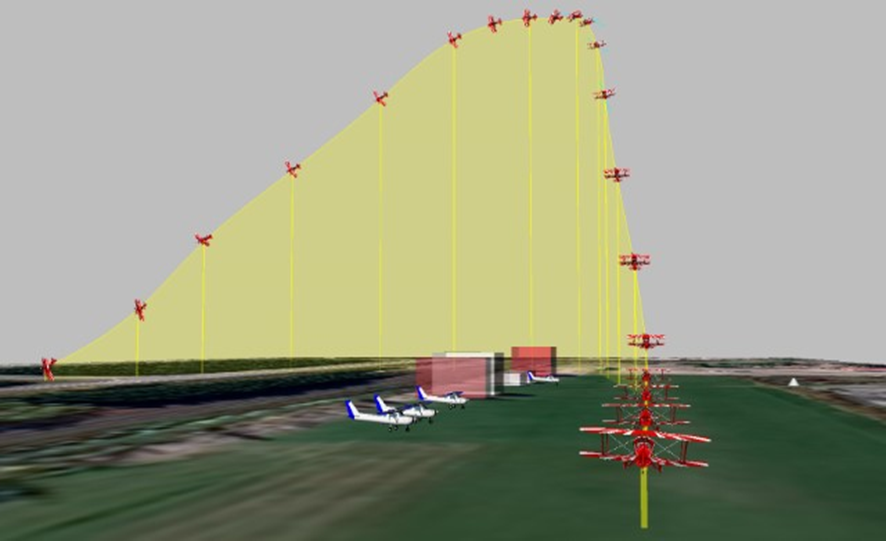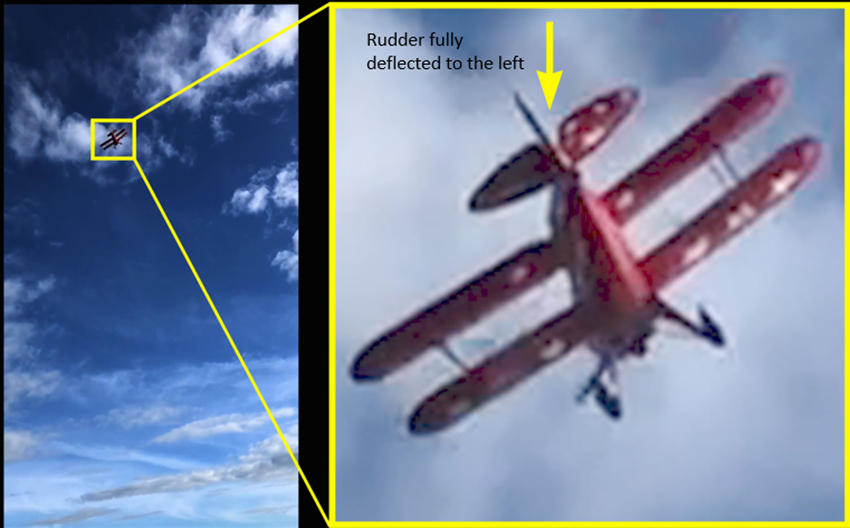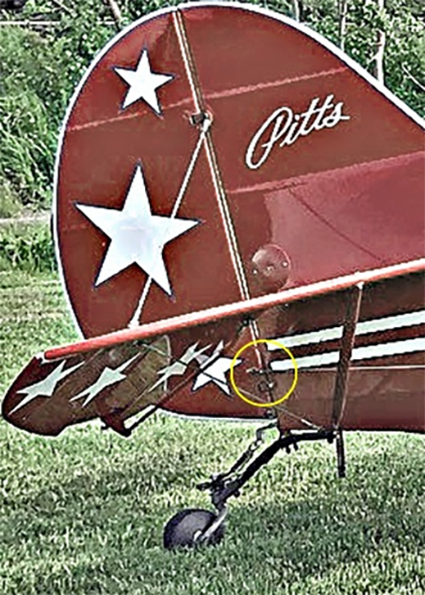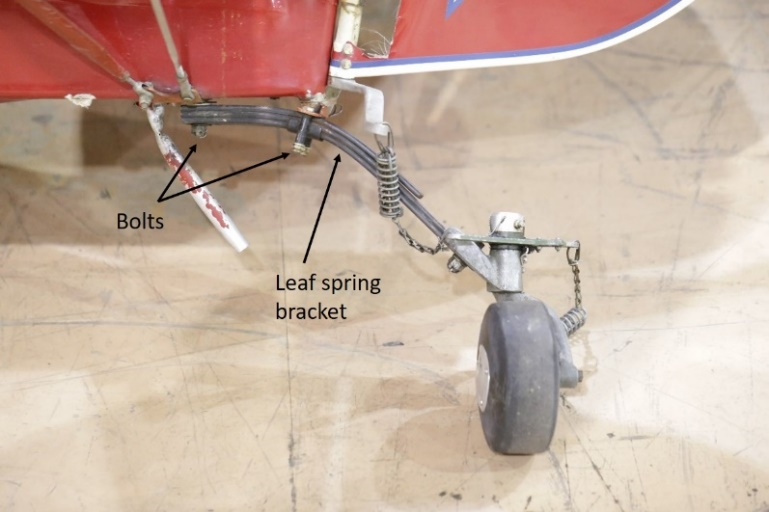Loss of control during initial climb and collision with ground
Pitts S2E (amateur-built aircraft), C-GONV
Saint-Jean-Port-Joli, Québec
The Transportation Safety Board of Canada (TSB) investigated this occurrence for the purpose of advancing transportation safety. It is not the function of the Board to assign fault or determine civil or criminal liability. This report is not created for use in the context of legal, disciplinary or other proceedings. See Ownership and use of content. Masculine pronouns and position titles may be used to signify all genders to comply with the Canadian Transportation Accident Investigation and Safety Board Act (S.C. 1989, c. 3).
Background
On the morning of 16 June 2019, an amateur-built aircraft, a Pitts S2E (registration C-GONV, serial number VNA-1), took off from Montréal/Aéroparc Île Perrot (CSP6), Quebec, headed to Saint-Jean-Port-Joli, Quebec. The pilot and the passenger on board were heading to an “Open Skies” day organized by the Aéro Port-Joli pilots association. The aircraft landed at its destination at approximately 0900.Footnote 1
Over the course of the day, the pilot conducted 7 aerobatic flights, each approximately 20 minutes long, with 1 passenger on board. These flights were conducted at an altitude that would allow the pilot to exit aerobatic manoeuvres at approximately 3000 feet above ground level (AGL). When returning from each flight, the pilot flew over the runway at a very low altitude before pulling up on the runway centreline, then making a shallow left turn before returning to the circuit at 1000 feet AGL for a landing. All of these flights occurred without incident.
History of the flight
At approximately 1825, after refuelling, the pilot and the morning passenger took off from Runway 24 at the Saint-Jean-Port-Joli Aerodrome on board the occurrence aircraft, to conduct a flight under visual flight rules (VFR) to CSP6, the aircraft’s base. Two amateur videos provided to the TSB showed that, after takeoff, the aircraft began a steep climb, then made a steep left-hand turn, lost altitude, and crashed in a nose-down attitude, leaning left, in a ditch next to a secondary road, approximately 450 feet southeast of the Saint-Jean-Port-Joli Aerodrome (Figure 1). The videos also showed that another aircraft took off immediately after the Pitts had taken off. The information gathered indicated that the pilot was aware that he was being followed closely by another aircraft.
The aircraft was destroyed by impact forces. A fire broke out but was quickly extinguished by individuals who were nearby. The passenger, who had been seated in the front, received fatal injuries, and the pilot, who had been seated in the back, received serious injuries. The emergency locator transmitter (ELT) activated on impact.
Weather information
The Saint-Jean-Port-Joli Aerodrome does not have a weather observation station. However, the aerodrome routine meteorological reports (METAR) from the 3 closest stationsFootnote 2 indicated that weather conditions were favourable for a VFR flight. According to the graphic area forecastFootnote 3 issued at 1333 and valid starting at 1400, the turbulence level varied from nil to light. Furthermore, weather radar images for the Saint-Jean-Port-Joli area at the time of the occurrence did not show any precipitation in the area. Consequently, weather conditions were not considered to be a factor in this accident.
Pilot and passenger information
The pilot was certified and qualified for the occurrence flight in accordance with existing regulations. He held a Canadian airline transport pilot licence – aeroplane and a valid Category 1 medical certificate. He held the following valid ratings: single- and multi-engine aircraft, Group 1 instrument and Class 1 instructor. The pilot had approximately 1500 flight hours as an instructor. His licence included type ratings for the Boeing 737 and the Convair 580. The pilot had accumulated approximately 4150 total flight hours, including 30.6 hoursFootnote 4 of flight timeFootnote 5 on the Pitts. Of these 30.6 hours, the pilot had flown 6.2 hours dual to become familiar with takeoff and landing manoeuvres on a tail wheel aircraft and 24.4 hours as pilot-in-command. In 2017, he took a 1-hour training flight on the occurrence aircraft with an individual who held an aerobatic instructor rating – aeroplane. He also took a training session in aerobatic manoeuvres with another instructor on a Cessna 150 Aerobat in order to obtain his aerobatic flight instructor rating.
The passenger sitting in the front held a valid private pilot licence – aeroplane. There was no evidence that he was at the controls at the time of the loss of control.
Aircraft information
The Pitts S2E is a biplane that was designed for aerobatics in the early 1940s by Curtis Pitts. Aviat Aircraft Inc., in Afton, Wyoming, United States, is now the type certificate holder for the Pitts certified version.
Over the years, amateur builders have assembled Pitts S2E in accordance with official drawings. The occurrence aircraft was built in the United States in 1982 and imported to Canada in July 2008. On 14 August 2008, Transport Canada (TC) issued a special certificate of airworthiness to the new owner at the time, authorizing a maximum take-off weight of 1575 pounds, while the maximum weight indicated on the aircraft’s identification plate was 1500 pounds. The special certificate had an operating condition requiring that a climb test be conducted at this weight in the next 5 flight hours, and that a test report be provided to TC. The climb test report was never submitted to TC; however, annual airworthiness information reports (AAIRs) filed with TC over the years by the owner still indicated a maximum take-off weight of 1575 pounds, until the owner at the time sold the aircraft to the occurrence pilot and his brother in October 2016.
On 03 November 2016, the new owners submitted a request to TC to modify the operating conditions in order to include aerobatic flights. At that time, TC informed them that the flight authority issued on 14 August 2008, allowing a maximum take-off weight of 1575 pounds, was no longer valid because the former owner had never provided a climb test report. On 14 November 2016, the new owners provided TC with a climb test report to increase the maximum take-off weight to 1575 pounds and to include aerobatic flights. After checking the file, TC noted that the aircraft’s identification plate indicated a maximum take-off weight of 1500 pounds. After inspecting the certified Pitts type certificate, the flight manual, and the aircraft’s identification plate, TC realized that it had made a mistake when the aircraft was imported in 2008, by authorizing a maximum take-off weight of 1575 pounds when the aircraft identification plate indicated 1500 pounds. TC then informed the new owners that it could not authorize a take-off weight greater than 1500 pounds without documents supporting the change in weight or a request to modify the plate.
On 15 November 2016, TC issued the owners a special certificate of airworthiness for amateur-built aircraft authorizing a maximum take-off weight of 1500 pounds. The certificate had operating conditions stipulating the aerobatic manoeuvres authorizedFootnote 6 and a maximum take-off weight of 1350 pounds for aerobatic flights. The AAIR dated 29 April 2019 submitted to TC indicated a maximum take-off weight of 1575 pounds. Given that AAIRs are no longer checked by TC inspectors, the situation was not detected. The aircraft’s weight at the time of the occurrence could not be determined with certainty, but it was close to the maximum weight of 1500 pounds authorized by the manufacturer and therefore over the permissible weight for aerobatics.
Performance
According to the aircraft’s flight manual,Footnote 7 at the maximum permissible take-off weight of 1500 pounds, the aircraft’s calibrated airspeed (CAS)Footnote 8 for stalls is 50 knots, and the aircraft can lose up to 200 feet of altitude during recovery after the stall. However, the stalling speed increases by 41%, to 71 knots (CAS) in a 60° coordinated banked turn in which altitude is maintained.
Video analysis
An analysis of the 2 amateur videos by the TSB Engineering Laboratory in Ottawa, Ontario, and the examination of the wreckage in the field enabled investigators to determine that the engine was working properly at the time of the occurrence and that no structural damage had occurred before the impact.
The video analysis also helped determine that, during takeoff, the Pitts flew over the runway at low altitude and accelerated to 67 knotsFootnote 9 before beginning a climb, during which the aircraft achieved a nose-up angle of 39° at 139 feet AGL, with a slight 3° bank to the left.
Over the next 4 seconds, the aircraft reached a speed of 91 knots, then its speed decreased to 37 knots before the nose-up angle decreased to 0. Over the same period, left bank angle gradually increased to 78°. At that time, the aircraft had reached a height of 371 feet AGL and a speed of 50 knots.
The videos also showed that the aircraft was in a skidding left turn for approximately 3 seconds (an uncoordinated turn). This type of skidding turn generally indicates poor coordination of flight controls (for example, too much pressure on the rudder pedal in the direction of the turn). In the screen captures taken from the videos, it is possible to see the position of the rudder, which was deflected completely to the left during the turn (Figure 2). It was not possible to determine the position of the ailerons.
Once the rudder was fully deflected to the left, the bank angle increased from 22° to 88° to the left. The aircraft was at 351 feet AGL at that moment, flying at a speed of 65 knots, which was less than the stall speed for a 60° turn. The aircraft stalled and rapidly lost altitude. The left bank gradually decreased to 29° when the aircraft was at 122 feet AGL. At that point, the aircraft was flying at a speed of 72 knots, in a nose-down attitude at an angle of 24°. The video enabled investigators to note that, during the descent, the elevator was placed in the up position twice (Figure 3), indicating a recovery attempt before the impact.
However, when the up-elevator was applied the 2nd time, the left wing dropped abruptly to an 87° angle when the aircraft was 54 feet AGL. It is highly likely that in that moment, the aircraft was in an accelerated stall.Footnote 10
The investigation was unable to determine the pilot’s exact intentions after takeoff, nor whether the manoeuvre was intentional. That being said, his destination was on a southwest trajectory, and that was the direction of takeoff, and the pilot was aware that he was being followed closely by another aircraft. Furthermore, the videos did not show that the pilot had attempted a manoeuvre to avoid birds or another aircraft.
Examination of the wreckage
The elevator, rudder, tail wheel and front- and rear-seat rudder pedals, as well as their cables, were examined by the TSB laboratory to determine whether a defect could have led to a loss of control. The rudder is controlled by 2 sets of rudder pedals, one for the pilot and one for the front seat occupant. The rudder pedals are connected to each other and to the rudder using steel cables. These cables are connected to a horn on either side of the rudder using a swaged fork terminal (Figure 4). It was noted that the horn on the right side of the rudder was bent and cracked. An examination of the horn revealed that it had cracked as the result of excessive stress from the impact.
The tail wheel is attached to a leaf spring that is bolted to the fuselage with 2 bolts (Figure 5). The examination found that the rear bolt of the leaf spring was broken. This break allowed the leaf spring to pivot around the front bolt. It could not be determined whether the break occurred before or after impact. However, an examination of the tail wheel assembly revealed that its full movement in one direction or the other could not interfere with the movement of the rudder.
The pilot’s rudder pedals are located on either side of the passenger seat (the front seat) and are accessible from the passenger seat. It is therefore possible that movement of the pilot’s rudder pedals could be hindered by a person or an object in the front seat. Given the significant damage to the aircraft, it was impossible to determine whether such interference occurred and whether it played a role in this occurrence.
There was nothing to indicate that a defect in the aircraft or the engine led to the loss of control during the initial climb after takeoff.
Aerobatic manoeuvres
Subpart 101 of the Canadian Aviation Regulations (CARs) defines an aerobatic manoeuvre as:
a manoeuvre where a change in the attitude of an aircraft results in a bank angle greater than 60 degrees, an abnormal attitude or an abnormal acceleration not incidental to normal flying.Footnote 11
For the purposes of the planned aerobatic manoeuvres, CARs section 602.28 states that:
No person operating an aircraft with a passenger on board shall conduct an aerobatic manoeuvre unless the pilot-in-command of the aircraft has engaged in
- at least 10 hours dual flight instruction in the conducting of aerobatic manoeuvres or 20 hours conducting aerobatic manoeuvres; and
- at least one hour of conducting aerobatic manoeuvres in the preceding six months.Footnote 12
Over the course of the day, the pilot conducted aerobatics with 1 passenger on board even though the requirements of the CARs were not met. He had only received 1 hour of training with a holder of an aerobatic instructor rating – aeroplane in 2017. Also, according to the aircraft’s journey log, the 24.4 hours of flight time as pilot-in-command corresponded to 18.4 hours of air time.Footnote 13 It is unlikely that these 18.4 hours were dedicated solely to performing aerobatic manoeuvres. However, as a flight instructor with a Class 1 instructor rating, he was frequently asked to demonstrate certain manoeuvres such as stalls, spins, and abnormal attitudes, which meet the definition of aerobatic manoeuvres.
Paragraph 602.27(d) of the CARs states that “[n]o person operating an aircraft shall conduct aerobatic manoeuvres […] below 2,000 feet AGL, except in accordance with a special flight operations certificate issued pursuant to section 603.02 or 603.67.”Footnote 14 This minimum altitude provides a margin of safety for the pilot to regain control of the aircraft if control is lost. In this occurrence, the aerobatic manoeuvres performed over the course of the day were being performed at an altitude greater than 2000 feet AGL, and therefore a special flight operations certificate was not required.
Safety messages
Pilots must remember that they are exposed to risks when they perform hazardous manoeuvres close to the ground—doing this may lead to a loss of control from which it is not possible to recover in time.
Although the CARs allow for aerobatic manoeuvres to be performed with 1 passenger on board, the requirements are minimal. Consequently, pilots must take into consideration that these requirements may not be sufficient even if the pilots have extensive overall flight experience.
In this occurrence, the pilot had extensive overall flight experience, but he had limited flight experience on the occurrence aircraft type. Pilots must be aware of the risks associated with having limited experience on the type of aircraft they are flying.
This report concludes the Transportation Safety Board of Canada’s investigation into this occurrence. The Board authorized the release of this report on . It was officially released on .




